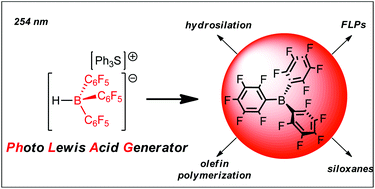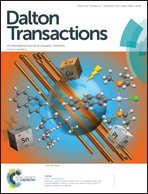Photo Lewis acid generators: photorelease of B(C6F5)3 and applications to catalysis†
Abstract
A series of molecules capable of releasing of the strong organometallic Lewis acid B(C6F5)3 upon exposure to 254 nm light have been developed. These photo Lewis acid generators (PhLAGs) can now serve as photoinitiators for several important B(C6F5)3-catalyzed reactions. Herein is described the synthesis of the triphenylsulfonium and diphenyliodonium salts of carbamato- and hydridoborates, their establishment as PhLAGs, and studies aimed at defining the mechanism of borane release. Factors affecting these photolytic reactions and the application of this concept to photoinduced hydrosilylation reactions and construction of siloxane scaffolds are also discussed.


 Please wait while we load your content...
Please wait while we load your content...